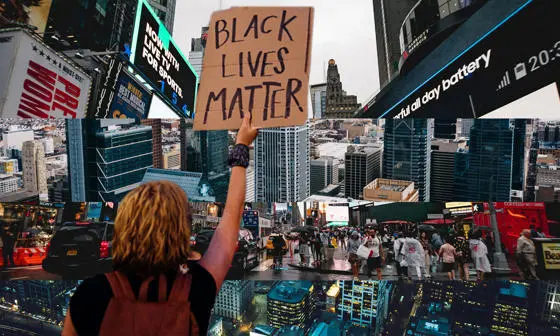Unsafe in the city? How urban planners can build more inclusive spaces for women

Contents
The way women navigate the world through the built environments which surround them is definitively shaped by both lived experience and perception of safety, according to Dr Pablo Navarrete-Hernandez in a recent publication, "Building Safer Public Spaces", co-authored with Dr Paz Concha and Arielle Vetro.
In many ways, the paper argues, women are excluded from participating in public space as a consequence of fear. From the mode of transportation they choose, to the route home from work they take, which gym to go to, or which park to take their children to – all of these daily activities are, to some degree, constrained by both devastating realities and heightened perceptions of crime.
In dedicating his work to efficient urban policies, former architect and current Visiting Fellow of LSE’s Latin America and Caribbean Centre, Dr Navarrete-Hernandez explains how providing practical environmental interventions to policymakers, through research, can help foreground the experiences of women in urban planning.
Feminist urbanism, he says, is helpful in defining the problem and locating its origins. "The theory says, and I would agree, that the planning and design of cities is male dominated. So, as a result, there is significant bias over who gets consideration when building the public space," he explains. "At its core, we (the co-authors) are recognising the need to include larger representation of women on those decisions."
The planning and design of cities is male dominated. So, as a result, there is significant bias over who gets consideration when building the public space.
A practical toolkit to help urban planners
Dr Navarrete-Hernandez also highlights another driving factor of exclusion, as well as an opportunity for innovation. saying: "We don't have the tools to incorporate diversity in planning. Our paper is a contribution to that purpose. Essentially, we offer a practical methodological tool to test how different changes in the built environment impact perceptions of safety in public space. It is affordable, accessible and aids the cultivation of gender equality in urban planning decisions. The theoretical contribution we provide with this paper is important, but to me, the crucial element is the practical toolkit."
Here, Dr Navarrete-Hernandez is referring to the study in which he and his co-authors explored whether the presence of three different design interventions (public toilets, solid walls, and graffiti removal) acted to enhance or reduce perceptions of safety in public space, focusing on women’s experiences. To test this, the researchers conducted an image-based randomised control trial, in which a series of control and treatment images simulating each design intervention was viewed and ranked by participants according to perceived safety.
A core finding was that removing solid walls led to significant improvements of perceptions of safety, with the effect being stronger for women. Dr Navarrete-Hernandez explains: "The presence of solid walls and, to a lesser extent, graffiti tags indicate a lack of environmental vigilance – you would feel as though nobody is looking at that space, that nobody would be able to help you if required. This total absence of control and assistance, crucially, would trigger fear."
[Understanding] fear of crime in its own right… will help us design new built environment interventions which foreground the comfort, freedom and emotional safety of groups which are critically underserved in urban planning.
Understanding what is behind people’s fear of crime can help planners design inclusive public spaces
A distinction is important to make, Dr Navarette-Hernandez notes, between urban interventions which centre crime prevention, and those which prioritise reducing fear of crime and foreground the experiences of women and other marginalised groups. He says: "The built environment interventions that we currently implement in urban planning, they come from the criminology perspective – which of course, focuses on the perpetrator, not on those afraid of being victims. These are separate constructs with unique associated problems.
"What we advocate with our experiment is to understand fear of crime in its own right. That will help us design new built environment interventions which foreground the comfort, freedom and emotional safety of groups which are critically underserved in urban planning. In this sense, we could end up with a much more diverse set of interventions.
"Fear of crime essentially has two components," he continues. "One is the cognitive experience of fear, which is the conscious phenomenon and intellectual rationalisation that says ‘okay, I am scared’. The other is the biological response. It is the reaction in our body – for instance, an increased heart rate and the release of cortisol. In psychology, these mechanisms are understood to be interconnected, and therefore affect each other. The mind and body experience immense stress when responding to fear.
"Ultimately, the response to such stress is detrimental to physical and mental health. Therefore, if we factor both the respective cognitive experience and physiological expression of fear, we could design fear-reducing interventions which have far more impactful and meaningful consequences – much more than if we were to rely entirely on the criminology-perpetrator paradigm in urban planning".
Through this perspective, we can see just how fear of crime in public space can impact women disproportionately. This fact delivers a core mandate, Dr Navarette-Hernandez and his co-authors argue, for urban planners and policy makers to consider design interventions and architectural features which centre women’s safety perception, when building inclusive cities.
Dr Pablo Navarrete-Hernandez was speaking to Sophie Charlotte, Media Relations Officer at LSE.
Download a PDF version of this article




